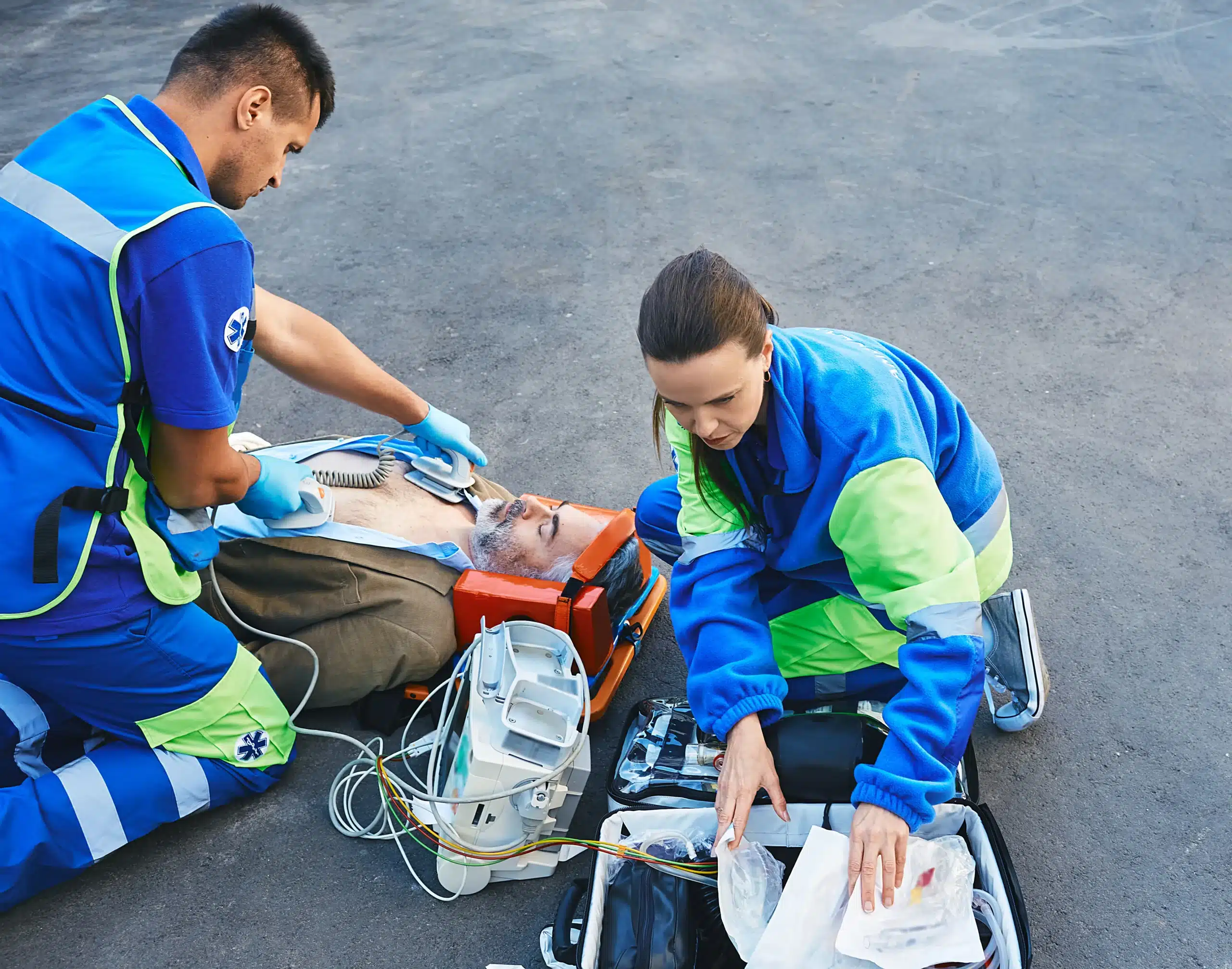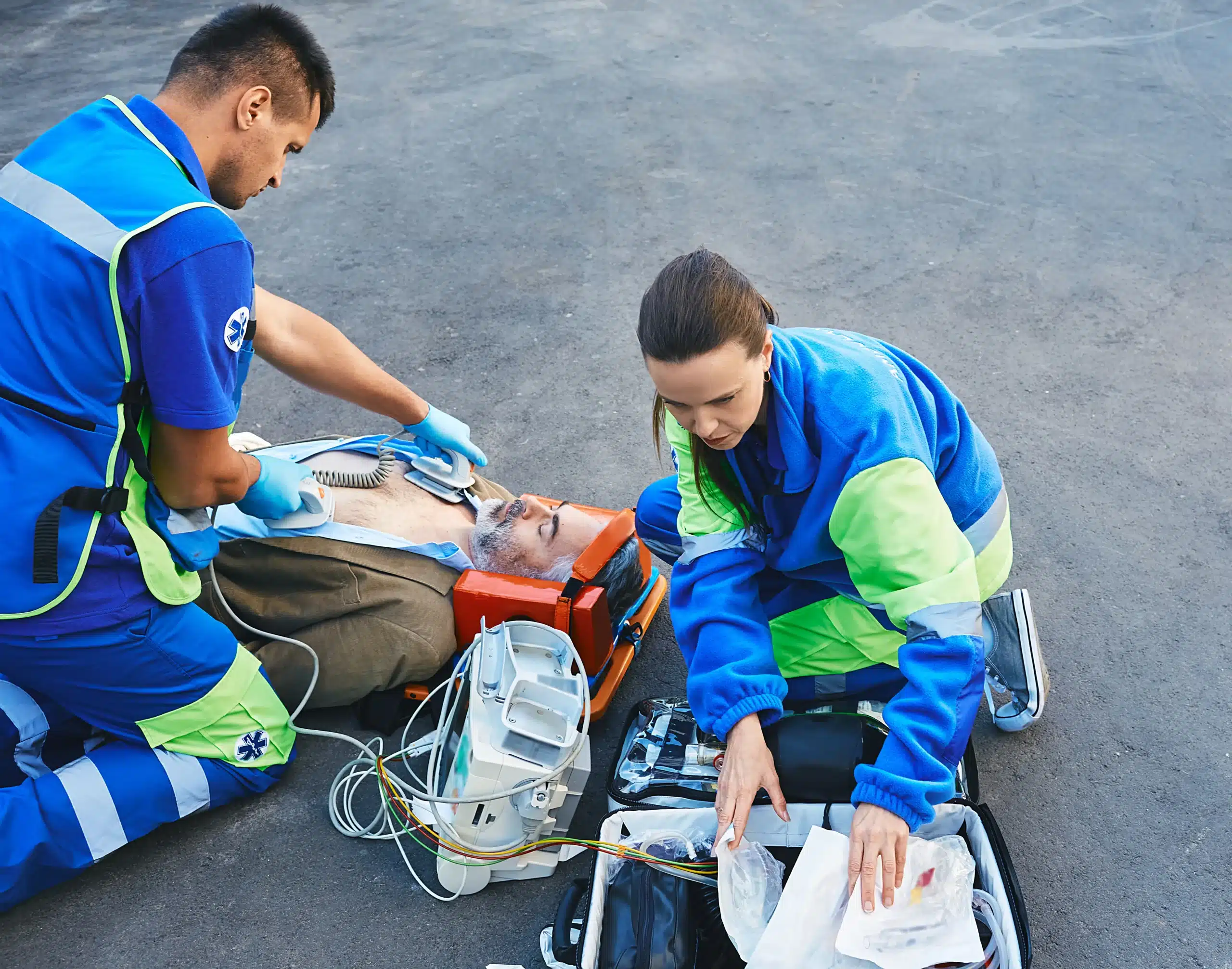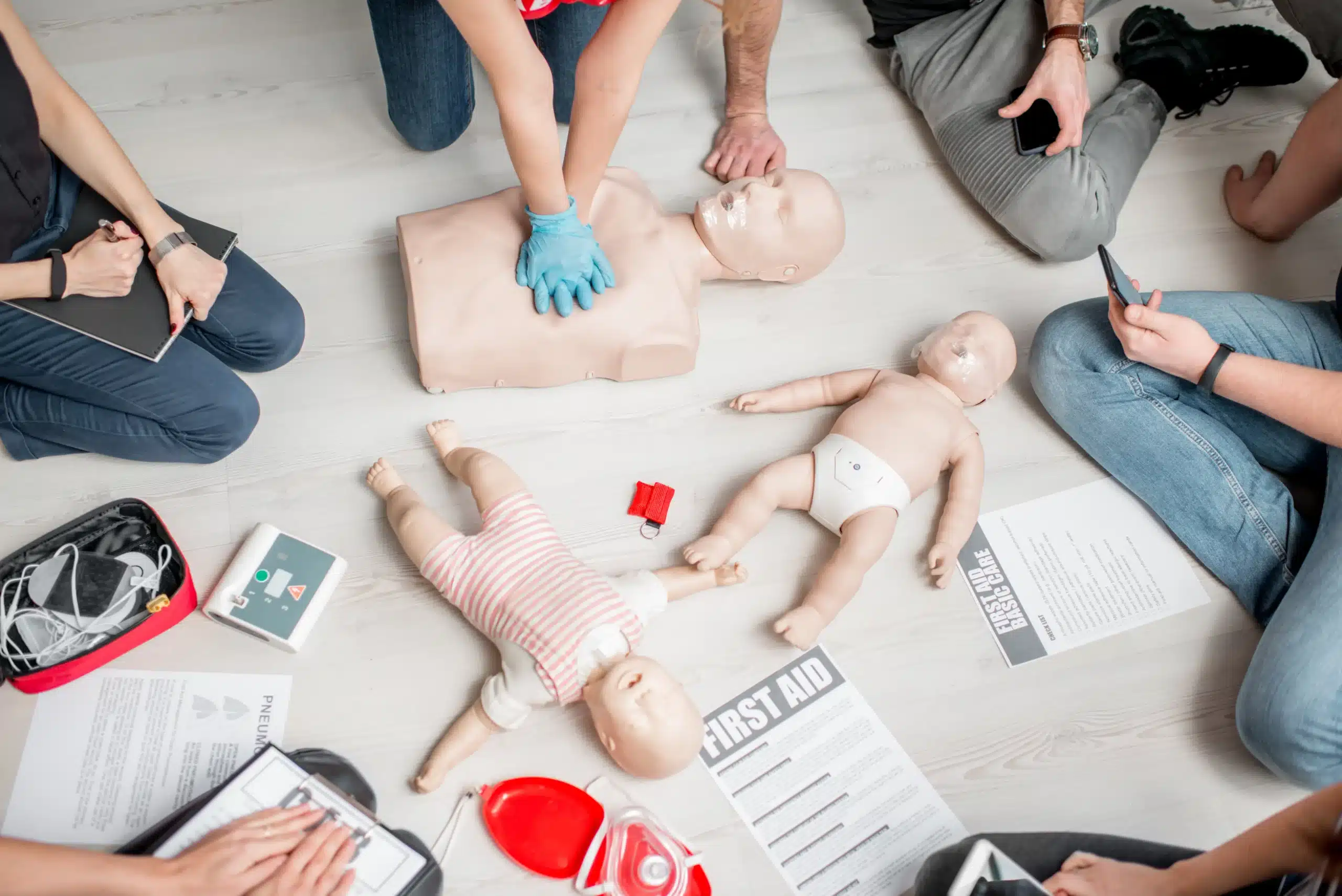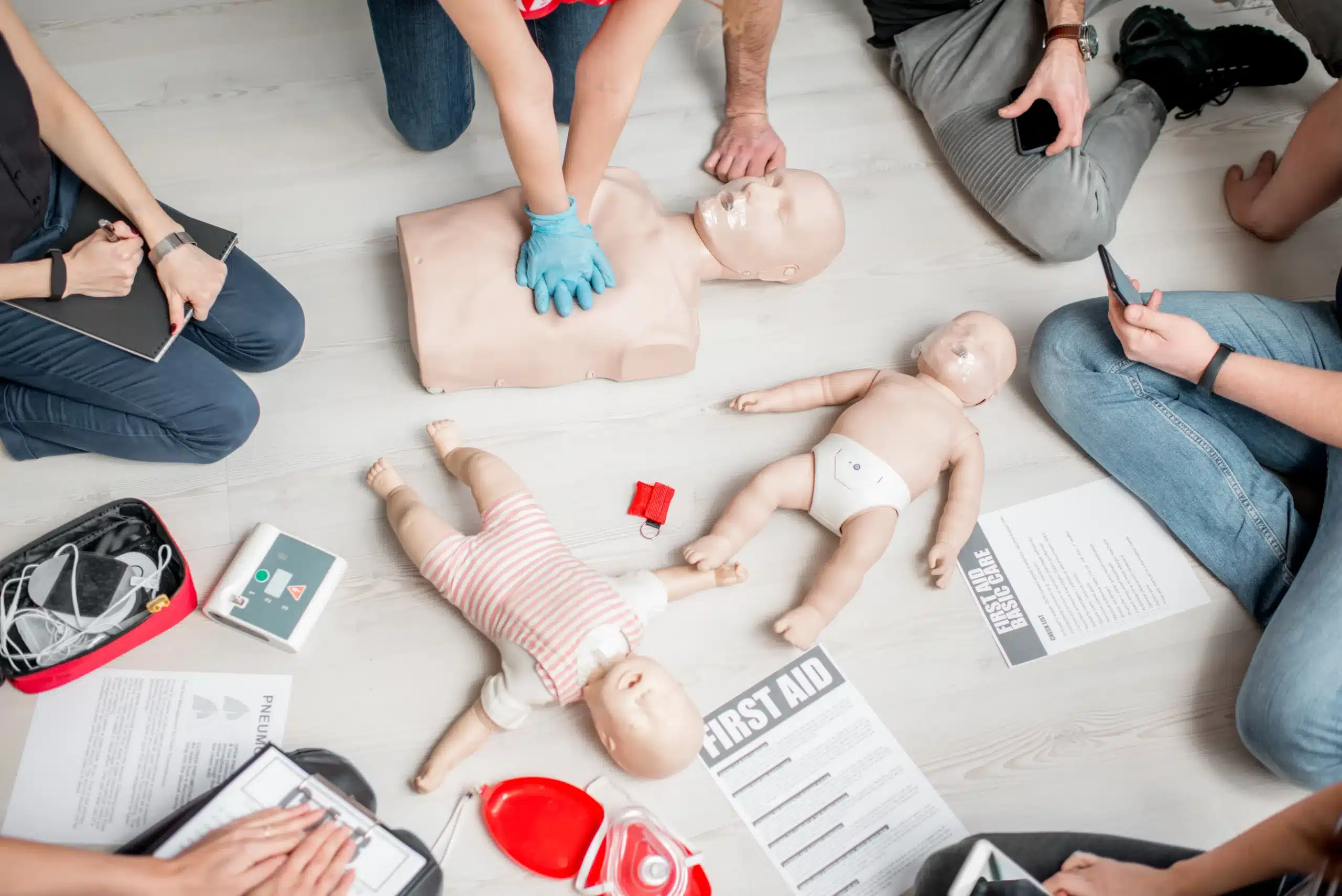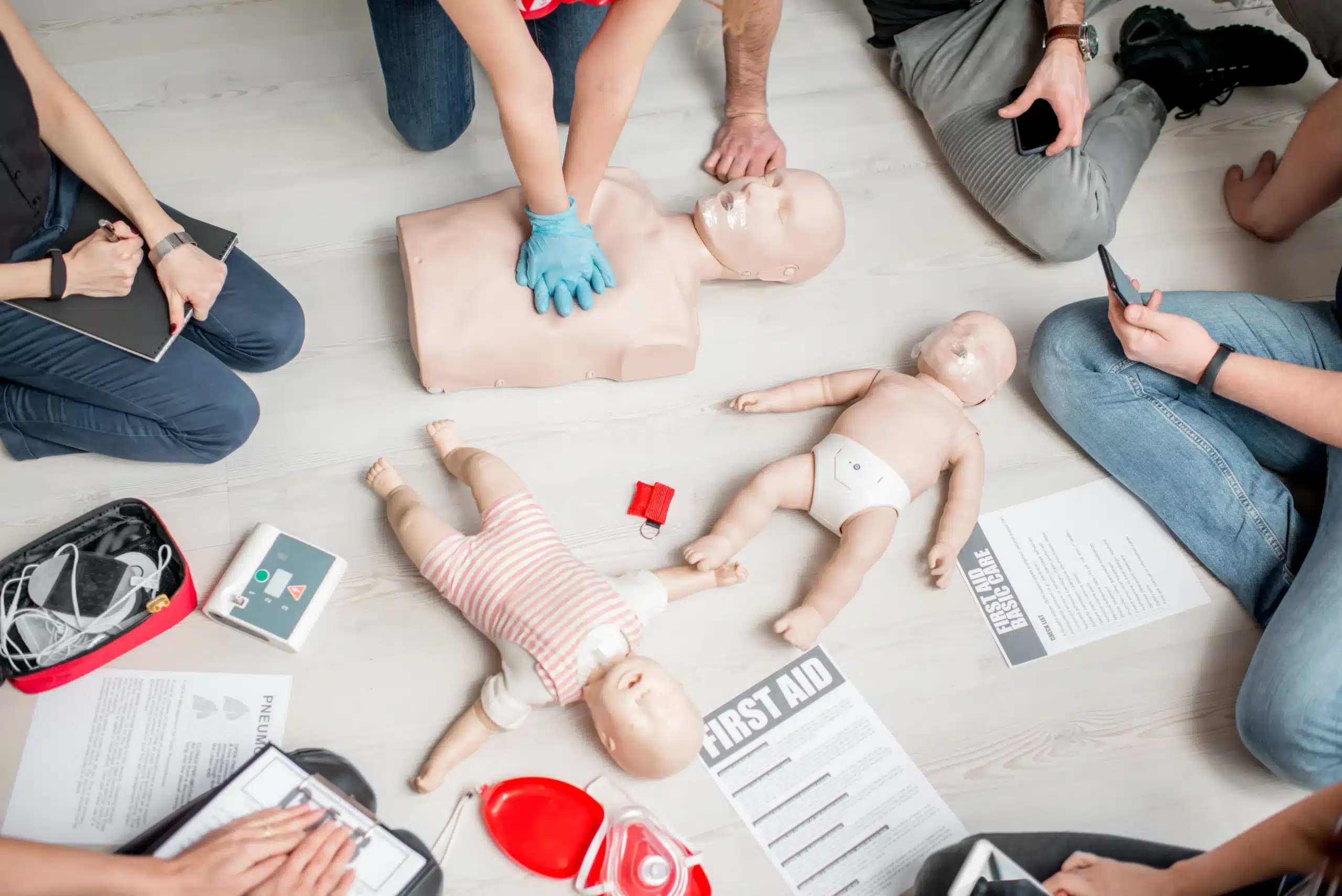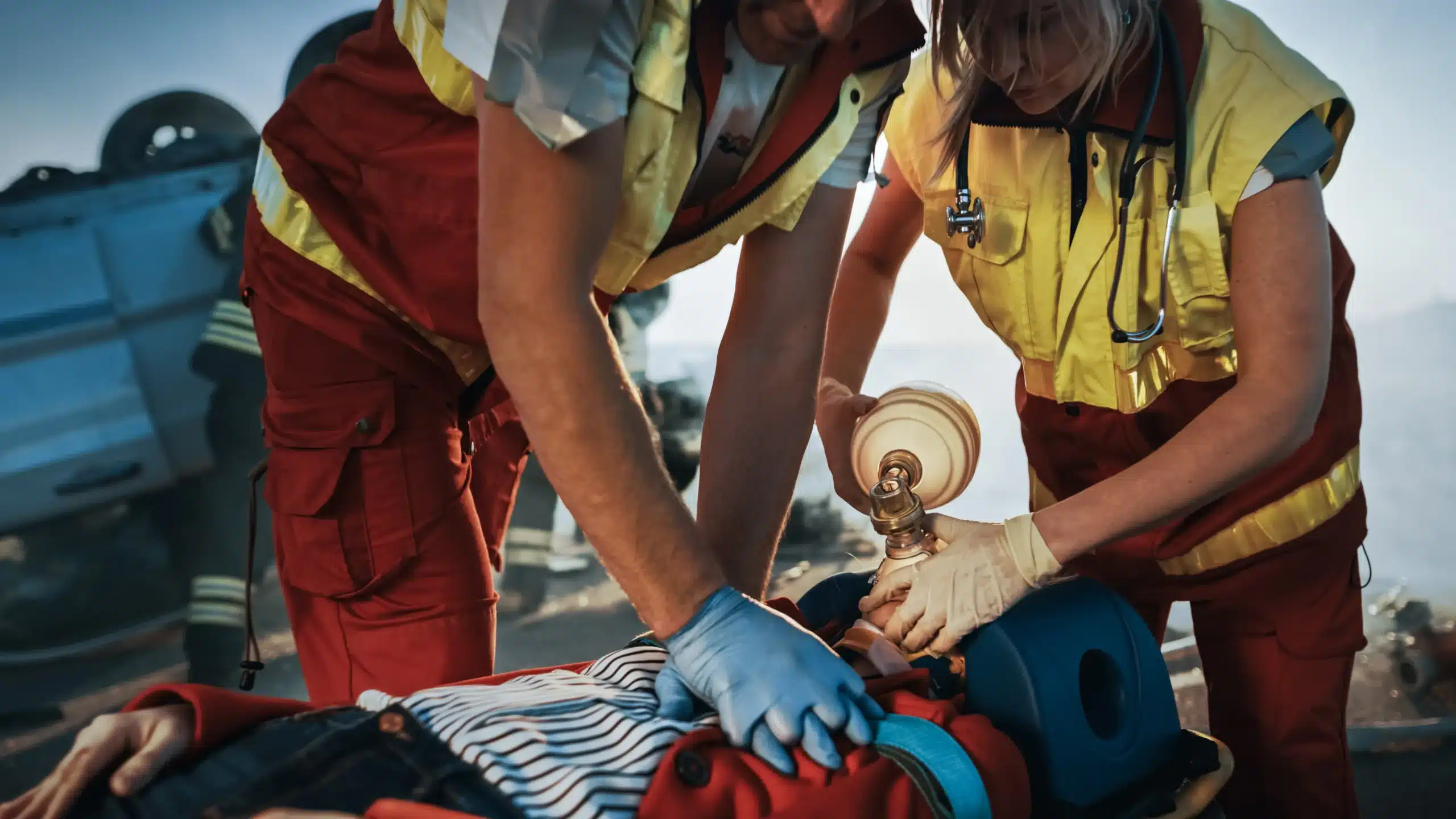Empowering yourself with life-saving skills is one of the most valuable things you can do. CPR certification provides the knowledge and training to respond effectively during medical emergencies, potentially making all the difference. This guide will help you understand the importance of CPR, explore different certification options, and find a “CPR certification near me.” We’ll cover everything from basic CPR techniques to more advanced certifications like ACLS and PALS, ensuring you have the information you need to choose the right course for your needs. We’ll also discuss what to expect during training and how to prepare, setting you up for success in your CPR certification journey.
Key Takeaways
- CPR certification equips you with life-saving skills. Find a course that suits your needs, whether you’re a healthcare provider, a childcare professional, or simply someone who wants to be prepared. Regular practice is essential for maintaining these skills.
- Choose a CPR course that aligns with your goals. Consider BLS for foundational skills, ACLS for advanced cardiac care, PALS for pediatric emergencies, or a combined first aid/CPR/AED course for comprehensive training. Look for accredited programs with experienced instructors.
- CPR training is an investment in yourself and your community. Explore different learning formats and check for group discounts to find a program that fits your budget. The confidence and skills you gain are invaluable.
What is CPR Certification?
CPR certification means you’ve completed a course and demonstrated the skills to perform cardiopulmonary resuscitation (CPR). It’s a valuable credential, showing you’re prepared to help in a medical emergency. You’ll learn CPR techniques in a structured environment, guided by certified instructors. These courses cover essential life-saving procedures, giving you the confidence to act quickly and effectively. While you don’t technically need formal CPR certification to perform CPR in a real-life emergency, having this training can dramatically improve the outcome.
What is CPR?
CPR, or Cardiopulmonary Resuscitation, is a life-saving technique used when someone’s heart stops beating. It involves chest compressions and rescue breaths to circulate oxygenated blood to the brain and other vital organs. CPR can keep a person alive until professional medical help arrives. Learning CPR empowers you to make a real difference in critical situations, equipping you with the skills to respond effectively and potentially save a life.
Why is CPR Training Important?
CPR training is crucial because it provides the skills and knowledge to respond effectively during cardiac arrest. Learning CPR can significantly increase someone’s chances of survival during a medical emergency. Bystander CPR can double or even triple a person’s survival rate. This immediate action can bridge the gap before paramedics arrive, increasing the likelihood of a positive outcome. CPR training instills confidence and reduces hesitation in emergencies, enabling you to provide immediate assistance.
Who Needs CPR Certification?
CPR certification isn’t just for healthcare professionals; it’s a valuable skill for everyone. While often required for specific jobs like healthcare providers, lifeguards, and childcare providers, anyone can benefit from this training. Parents, teachers, coaches, and even those with elderly family members can find CPR training invaluable. Knowing CPR empowers you to respond effectively in emergencies, whether at home, work, or in public spaces. It’s a skill that can make a profound difference, so consider finding CPR training near you.
CPR Certification: Choosing the Right Course
Finding the right CPR certification boils down to your specific needs and career goals. Let’s break down some of the most common certifications and who they’re designed for.
Basic Life Support (BLS)
BLS certification provides the foundational knowledge and skills healthcare providers, first responders, and other professionals use to respond to life-threatening emergencies. The course emphasizes recognizing cardiac arrest, performing high-quality CPR, and using an AED. It’s the cornerstone for many healthcare certifications and often a prerequisite for more advanced training. If you’re working in healthcare, BLS is likely a must-have.
Advanced Cardiac Life Support (ACLS)
ACLS certification goes a step further than BLS. It’s designed for healthcare professionals who manage patients during cardiac arrest or other cardiovascular emergencies. ACLS covers advanced interventions, pharmacology, and team dynamics in high-pressure situations, giving providers the tools to make quick, informed decisions. Think of it as the next level for those already working in critical care settings.
Pediatric Advanced Life Support (PALS)
PALS certification focuses on the specific needs of infants and children facing medical emergencies. Healthcare providers who work with young patients will learn specialized resuscitation techniques, medication dosages, and how to manage respiratory and cardiovascular issues unique to this age group. It’s a critical certification for pediatricians, nurses, paramedics, and other professionals dedicated to pediatric care. If your career involves caring for kids, PALS should be on your radar.
First Aid and CPR/AED
Combining first aid and CPR/AED training equips anyone to handle a wide range of emergencies. These courses cover everything from treating minor injuries like cuts and burns to responding to more serious situations like choking, allergic reactions, and cardiac arrest. This combined approach empowers individuals to provide immediate care in various settings, making it a valuable asset for both personal and professional life. It’s a great option for anyone looking for comprehensive emergency preparedness training.
Find CPR Certification Near You
Finding the right CPR class can feel overwhelming, but it doesn’t have to be. Here’s a breakdown of how to find CPR certification near you:
American Heart Association Training Centers
The American Heart Association (AHA) offers a variety of CPR and first aid training courses designed for both healthcare professionals and the general public. You can easily locate AHA training centers near you using their online locator tool. Our Walnut Creek location is an authorized AHA Training Center, offering courses in BLS, ACLS, and PALS. Check out our BLS, ACLS, and PALS pages for more information. We also offer the EMSA Child Care Health & Safety course.
Red Cross Training Centers
The American Red Cross also offers comprehensive CPR training. Their website provides information on finding CPR classes in your area. While we don’t offer Red Cross training, it’s a valuable resource to explore.
Local Healthcare Providers
Many local hospitals and clinics offer CPR training sessions. Check with your local healthcare providers to see what courses they offer. This can be a great way to find convenient, relevant training.
Online vs. In-Person Training
Both online and in-person CPR training have their advantages. Online courses offer flexibility, allowing you to learn at your own pace. In-person classes provide hands-on practice and direct interaction with an instructor. Blended learning, which combines online coursework with in-person skills sessions, is another popular option. We offer a variety of formats to fit your schedule and learning style. Our RQI program is a great example of a blended learning approach. We also offer a low price guarantee, so you can find the best value for your training.
What Happens During CPR Training?
CPR training gives you the skills and confidence to act quickly during medical emergencies. Here’s what you can expect during a typical CPR class.
Course Duration and Format
CPR classes are designed to fit your schedule and learning style. Choose from in-person training, online courses, or a blended learning format that combines online instruction with hands-on practice. Most courses run between two and two and a half hours, depending on the format and content. Blended learning usually involves one to two hours of online coursework and a shorter in-person skills session of 40 to 60 minutes.
Essential Skills You’ll Learn
CPR training covers essential life-saving techniques, including chest compressions, rescue breaths (mouth-to-mouth resuscitation for some certifications), and how to use an automated external defibrillator (AED). You’ll also learn to recognize the signs of a heart attack and stroke. Many courses include basic first aid and techniques for relieving choking in adults, children, and infants. The goal is to equip you to handle a variety of emergency situations.
Certification Process
After completing the coursework and passing a skills test, you’ll receive your CPR certification. This certification is generally valid for two years. To keep your skills sharp and stay current with the latest guidelines, sign up for a renewal course before your certification expires. Regular practice and refresher courses are the best ways to maintain these life-saving skills.
Choose the Right CPR Program
So you’ve decided to get CPR certified—fantastic! Now, it’s time to choose the right program. Finding a high-quality CPR class isn’t just about checking a box; it’s about gaining the confidence and skills to potentially save a life. Here’s what to look for:
Accreditation and Recognition
First things first, check for accreditation. A program accredited by a nationally recognized organization, like the American Heart Association (AHA), ensures the training meets established standards and guidelines. This is important for ensuring you receive high-quality instruction and a certification employers and organizations trust.
Instructor Qualifications
The instructor’s experience matters. Certified CPR instructors bring real-world knowledge and practical skills to the classroom, creating a more engaging and effective learning experience. Look for programs that highlight their instructors’ certifications and experience.
Course Materials
Up-to-date course materials are essential. Make sure the program uses current guidelines, like those from the AHA, so you’re learning the most recent techniques. Comprehensive CPR courses often include a combination of textbooks, videos, and hands-on practice equipment. This multifaceted approach helps solidify your understanding and better prepares you for real-life scenarios.
Student Feedback
What are other students saying? Reading reviews and testimonials can give you valuable insights into other students’ training experiences. Look for comments about the instructors, the course content, and the overall effectiveness of the program. These firsthand accounts can offer a helpful perspective as you make your decision.
CPR Certification: Costs and Value
Getting CPR certified is an investment in your skills and the community’s well-being. Let’s break down the costs associated with different CPR certification levels, explore available discounts, and underscore why this training is so valuable.
Pricing for Different Levels
CPR certification costs vary based on the course level and provider. Basic Life Support (BLS) certification, for example, is often priced around $120 in Northern California. This price typically covers the online portion, the hands-on skills test, and your official certification card. Our BLS CPR course is designed to be accessible, and we’re proud to offer the lowest price in the area. More advanced certifications like ACLS (Advanced Cardiovascular Life Support) will generally have a higher price tag due to the specialized nature of the training. We also offer other essential courses such as EMSA Child Care Health & Safety and RQI classes. Check our website for our low price guarantee.
Group Rates and Discounts
Many training centers offer discounts for group bookings, making it cost-effective to train your entire team. If you have a group of 14 or more employees, reach out to us about our discounted rates for group CPR training. This can be a smart way for businesses to equip their staff with these essential skills while saving on overall training expenses.
The Value of CPR Training
While there’s a financial cost associated with CPR training, the value it brings is immeasurable. Learning CPR equips you with the skills to potentially save a life. In a cardiac arrest situation, bystander CPR can double or even triple a person’s chances of survival. Think of it as an investment not just in your own knowledge, but in the safety and well-being of those around you. Even if you never have to use your CPR skills, the confidence and preparedness you gain are invaluable. It’s important to remember that while performing CPR without formal training is possible, a certification course ensures you’re properly trained to administer this technique effectively. This training can make all the difference in a critical situation.
Prepare for Your CPR Certification
Getting ready for your CPR certification is straightforward. A little preparation beforehand will help you feel confident and ready to learn these lifesaving skills. Here’s what you should know:
Pre-course Requirements
Most CPR certification courses, including those for BLS, ACLS, and PALS, don’t have formal prerequisites. You don’t need any prior medical knowledge or training to enroll. CPR certification is for everyone, regardless of age or background. In fact, training is available even for childcare providers through the EMSA Child Care Health & Safety program. Don’t let any misconceptions hold you back.
What to Bring
While there aren’t usually required materials to purchase beforehand, comfortable clothing is a must. You’ll be practicing CPR techniques on mannequins, so you’ll want to move freely. A small notebook and pen can be helpful for jotting down notes, though most courses provide materials. Choosing a credible training provider, like an American Heart Association Training Center, is key to a valuable learning experience.
Tips for Mastering CPR
CPR training involves both learning the theory and physically practicing the techniques. Active participation in the hands-on portions of the class is the best way to build your muscle memory and confidence. Don’t hesitate to ask your instructor questions—they are there to guide you. And remember, refreshing your CPR skills is important. Even after you’re certified, regular practice and recertification will ensure you’re always prepared to respond effectively in an emergency. Consider exploring the RQI program for convenient certification and skill maintenance. Our low price guarantee ensures you’re getting the best value for your training investment.
Related Articles
- Why CPR is Important in Healthcare
- CPR Training in Pleasant Hill: Your Complete Guide – Walnut Creek CPR Classes
- CPR Training in Walnut Creek: Your Complete Guide – Walnut Creek CPR Classes
- Online CPR Classes in Walnut Creek: Your Complete Guide
- CPR & First Aid Classes in Pleasant Hill: A Complete Guide – Walnut Creek CPR Classes
Frequently Asked Questions
What’s the difference between BLS and ACLS certification? BLS certification focuses on the fundamentals of CPR and AED use for any responder, while ACLS training builds upon those basics with advanced techniques for healthcare professionals managing cardiovascular emergencies. Think of BLS as the foundation and ACLS as the specialized structure built upon it.
How long does CPR certification last, and how do I renew it? CPR certification is typically valid for two years. To renew, you’ll need to take a recertification course before your current certification expires. This ensures your skills are up-to-date with the latest guidelines.
Do I need any prior medical experience to take a CPR class? Not at all! CPR training is designed for people of all backgrounds, regardless of prior medical experience. Whether you’re a healthcare professional, a parent, or simply someone who wants to be prepared, a CPR class welcomes you.
What if I’m nervous about the hands-on portion of the class? It’s completely normal to feel a little apprehensive about the hands-on part. CPR instructors understand this and create a supportive learning environment. They’ll guide you through each step, answer your questions, and offer encouragement. The more you practice, the more confident you’ll become.
Is online CPR certification as good as in-person training? Both online and in-person CPR training have their benefits. Online courses offer flexibility, while in-person classes provide hands-on practice with an instructor. Blended learning, combining online coursework with an in-person skills session, offers the best of both worlds. The most important factor is choosing a reputable, accredited program regardless of the format.

